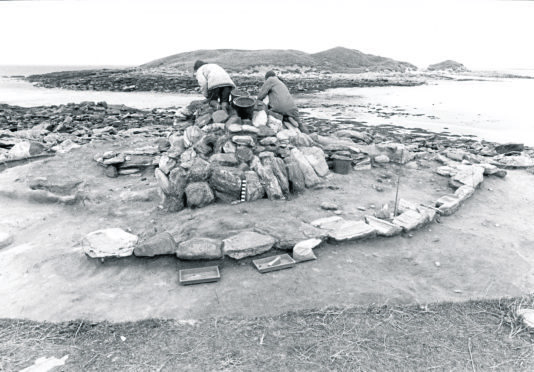A series of devastating storms shaped the lives of islanders in the second millennium BC, new evidence has revealed.
Excavations at the Udal in North Uist revealed some of the hardships experienced by people living in Neolithic and early Bronze Age Scotland.
A new book called Life on the Edge: The Neolithic and Bronze Age of Iain Crawford’s Udal, North Uist reveals some of the mysteries of ancient island life.
Tests were done on the remains of people found in two burial cairns dating back to the second millennium BC that show the dramatic effect the environment had on the community.
Analysis of the teeth of two skeletons buried on the site showed they had suffered a lack of food as children – even periods of starvation.
The Udal excavations revealed the archaeological remains of two round buildings dating to between 3000 and 2500 BC.
Archaeologists believe that one devastating storm followed another and that the movement of the communities separate the end of the Neolithic era with the start of the Bronze Age.
One settlement had been devastated by a storm that engulfed the settlement in sand, forcing the occupants to move inland.
Beverley Ballin-Smith of GUARD Archaeology, which has been leading the post-excavation work, said: “The two houses may have been the last surviving structures of a larger settlement that was covered over by a thick layer of blown sand, like Skara Brae on Orkney.
“The storm that brought the sand covered fields and grazing lands in addition to the village, from dunes to the west. The effects were so severe that the buildings and the farming land had to be abandoned and people moved inland.”
However, a second storm brought a severe flood that destroyed the new fields by depositing a thick stone and shingle beach across them.
Around 2400 BC the accumulation of sand and the flooding “separated the end of the late Neolithic settlement from the beginning of the early Bronze Age.”
Ms Ballin-Smith said: “Our Neolithic and Bronze Age ancestors lived through climate change events such as dramatic sea-level rise and increased storminess, and trauma such as loss of fields, crops and animals.
“They had to relocate their settlement and houses to safer areas. How the inhabitants of the Udal survived during the Bronze Age will be part of the research on the next Udal site – the South mound.”
